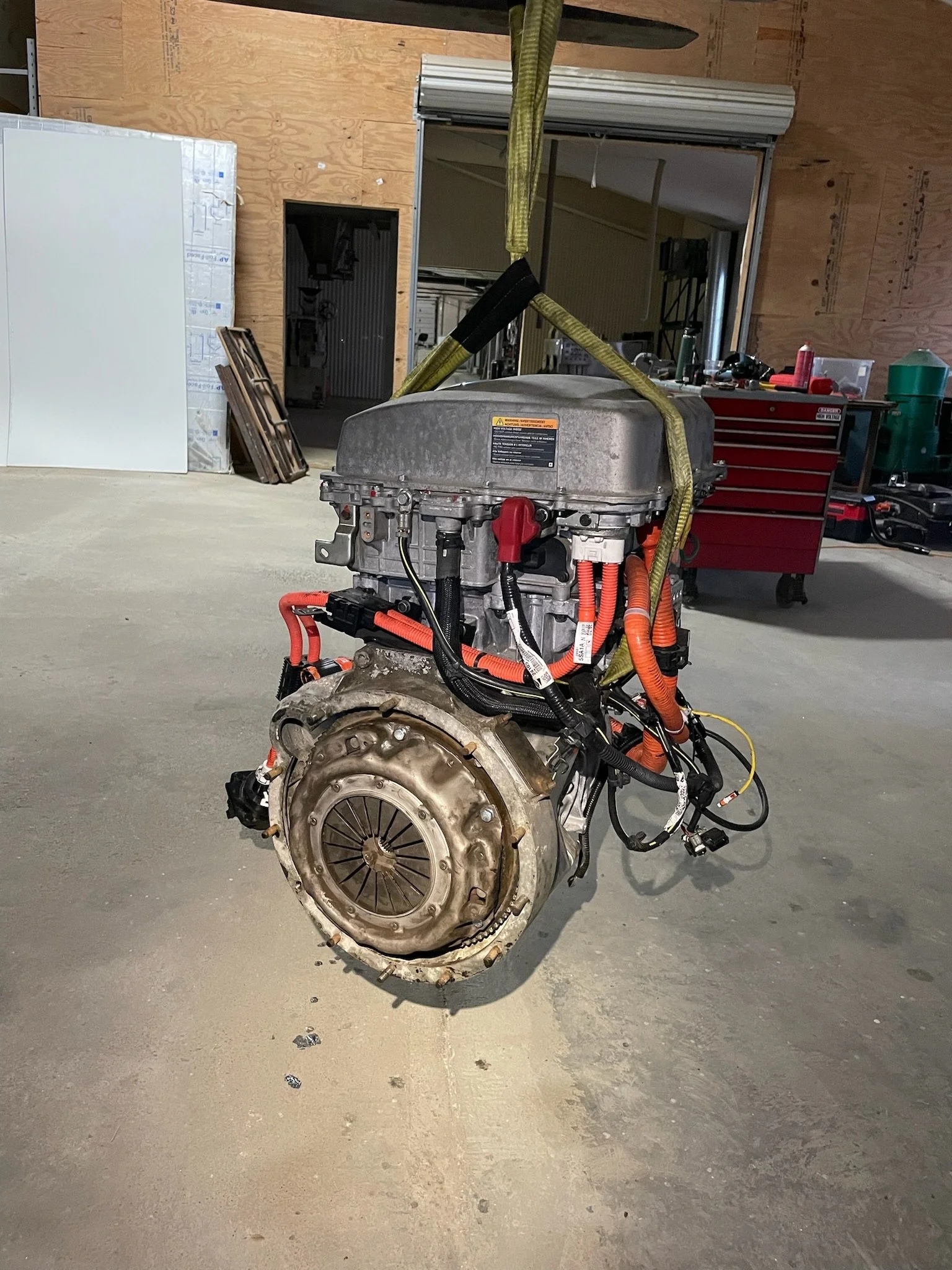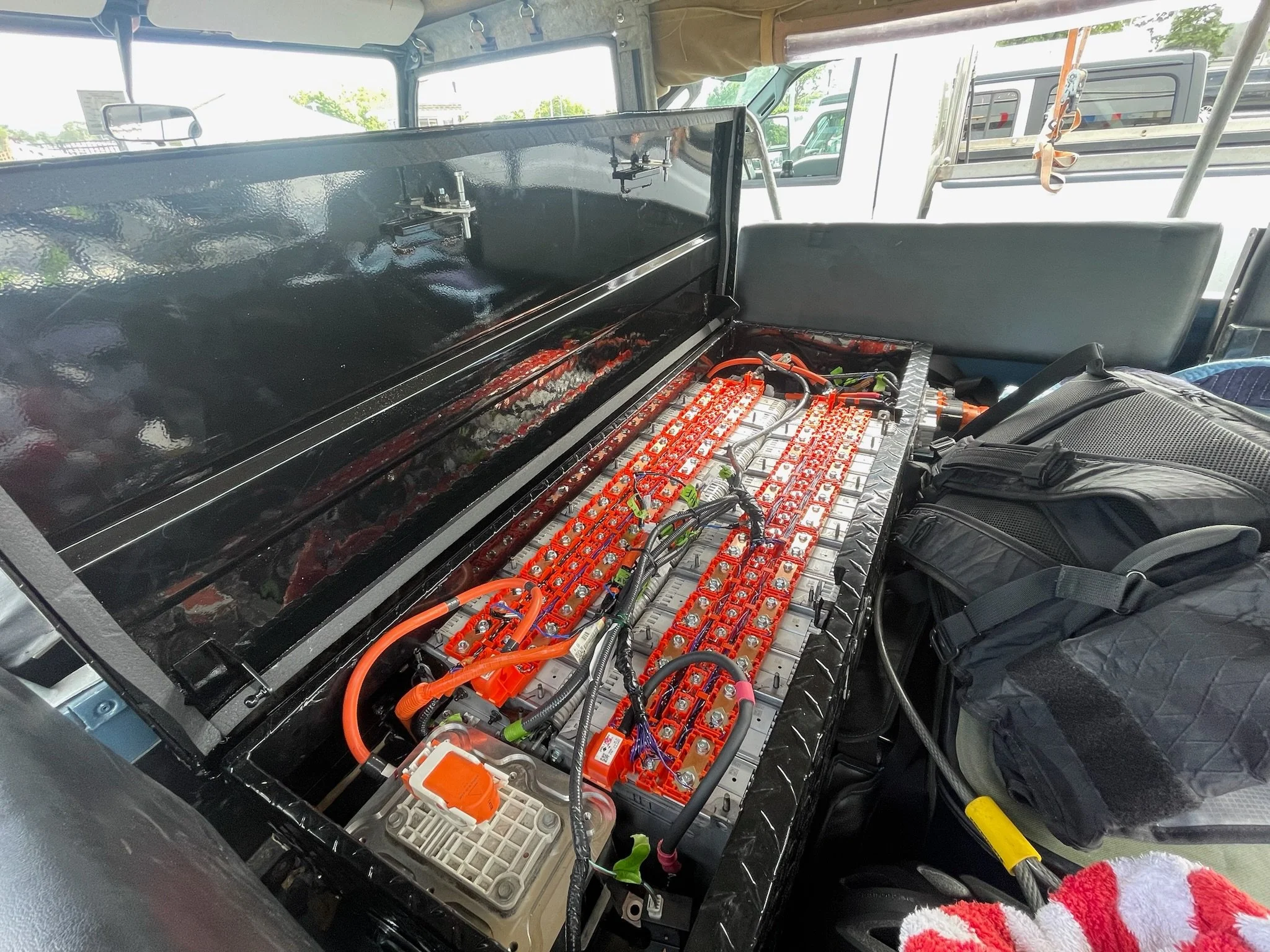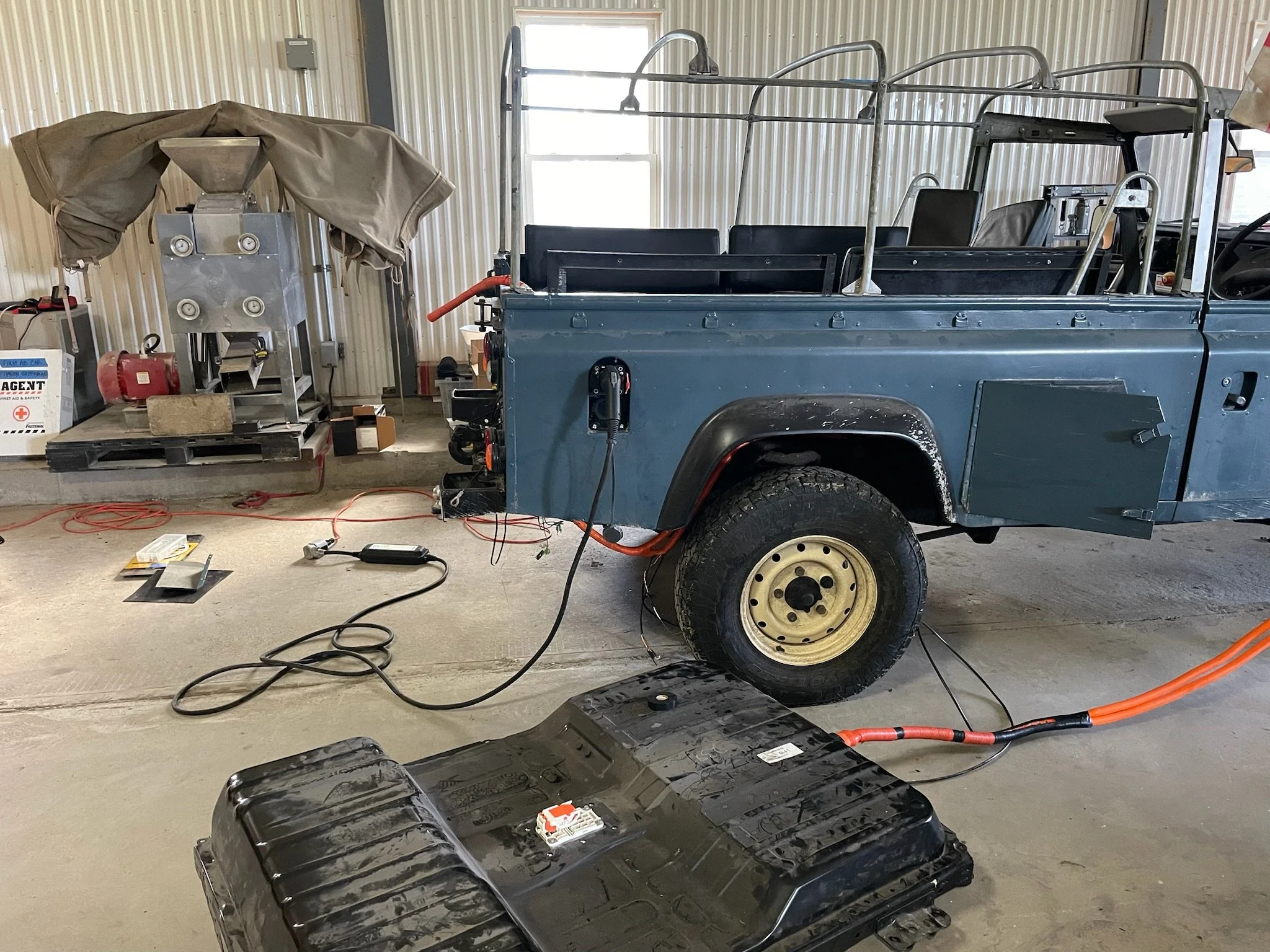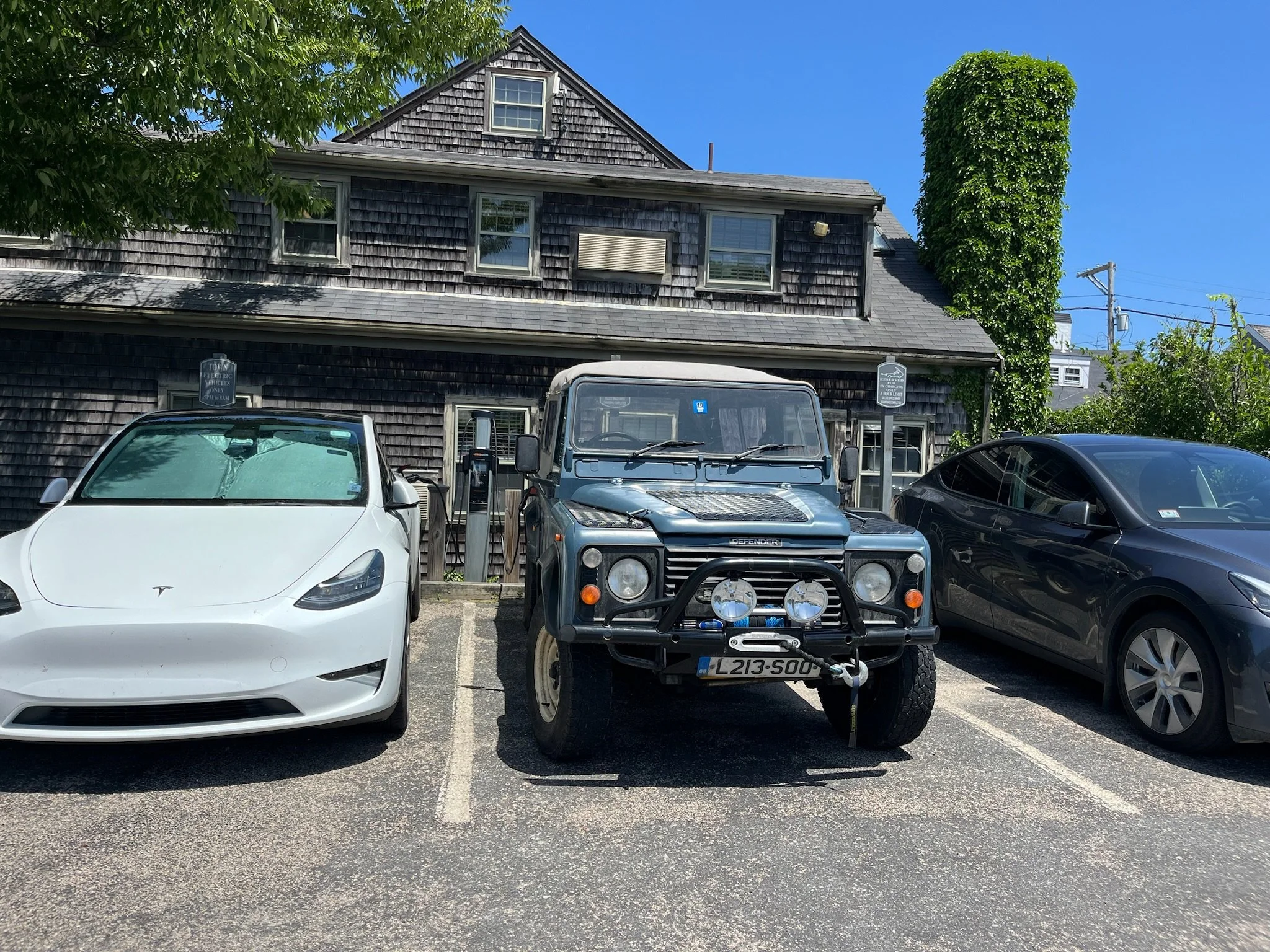Who we are
Owning an old vehicle is an experience. Some consider it a lifestyle, while others consider it a stark defiance to modern technology, and all the good that comes with it. These folks fall into a couple buckets … the “purists” — who love to keep everything original, and anything other than that is sacrilege, or the “restomod” folks, who like to modernize while keeping things all OEM (e.g., new drivetrain components from the same manufacturer who originally made the vehicle, etc.). Either way, these two groups have been opposed to each other to some degree for as long as a passion for cars has existed — and then there’s us. We appreciate the classics for their uniqueness, yet we’re not tied to the OEM components, let alone traditional fossil fuels. We strive to blur the lines (and, ultimately, piss some people off as a byproduct) all in the name of function, sustainability, reliability and performance. Driving something that gets 11 miles to the gallon is gluttonous in every sense of the word, and we decided we had enough. It was time to solve this problem.
The vehicle on the operating table is a 1993 Land Rover Defender 110, an ex-military vehicle from the British Ministry of Defense (MoD) that served in some “undisclosed” locations throughout the late 90s before we imported it stateside. It quickly underwent its first “heart transplant” as we removed the gutless 2.5 NA diesel, which acted more as a smoke machine than an engine, in favor of an upgrade in reliability, performance, and serviceability: an inline six gasoline engine from a 1971 Chevrolet pickup truck. It just made sense, although it was backdating 30 years. This improved drivability and reliability immensely, but it didn’t have a very positive impact from an environmental standpoint. Every day, I’d drive to work and park at the cutting-edge electric aerospace company I work at, among the sleek and environmentally-friendly electric vehicles, feeling guilty as ever knowing I had the skillset to make a change. It was just a matter of when.
After deciding to electrify the Rover, we came up with a rough budget and started shopping around. There are quite a few companies all over the world that do exactly this with old Land Rovers, but they were expensive — 10x what we wanted to spend. The logical solution came to fruition: We would EV-swap my Defender ourselves.
The Nissan Leaf is one of the most widely-produced electric vehicles on the market, and they’ve been around for 10 years or so now, which means lots of them have already ended up in scrap yards. Perfect. The target was two-fold: we chose to buy an entire Leaf from the scrap yard, thus helping to recycle an EV while also transforming the antiquated 1900s piece of technology into something fit for the 21st century.
If you asked if I’d consider myself a “petrolhead”… the answer would be yes. The sounds, their smells, the simplicity (at times), and the sheer sense of actually driving with three pedals at my feet I feel qualifies me as such. However, this upbringing and mindset was much less significant in my eyes than the negative impacts incurred from operating a dinosaur. The same principle applies to the aviation industry (minus the three pedals), but I’ll get into that later. I wanted to keep my manual transmission and still shift through gears — but with an electric power plant. Most EV conversions do away with the transmission and opt for a direct-drive solution, which cuts down on complexity at the sacrifice of driveability. It would be sluggish, stuck in a single gear forever and, in my opinion, pretty useless. Electric motors love higher rev operations while all of the other components would prefer the opposite, so some sort of gear reduction is advisable. My requirements were this: >60-mile range, <150 horsepower (so I wouldn’t break my drivetrain components downstream of the motor) and lastly, I still wanted to shift.
The search for a donor vehicle led me to a 2018 Nissan Leaf SV with a 40 kWh battery pack and a 147 hp, 236 pound-feet of torque motor with just 23,182 miles on the odometer. After some internet searching for rough dimensions, the components seemed like they’d repackage nicely in the space I had available without disassembly and disbursement of the factory motor/inverter/charger stack up. The Leaf got ~4 miles per kWh consumed and, after some quick aerodynamic and drivetrain loss considerations/differences between the Leaf and the Defender, I figured I’d get ~2 miles per kWh consumed at best, which works out to an 80-mile range. Perfect.
After enduring the joys of an online auction and paying more than I should have, a wrecked Leaf was delivered to my doorstep in the middle of a January snowstorm. It still turned on with the dash resembling a christmas tree, and drove fine with most of the front end of the vehicle missing. I ushered it inside and the disassembly process began. The conversion took ~6 months of weekends and late nights with the help of my girlfriend, Ella. The motor, radiator, gas tank, fuel lines and associated engine gauges were stripped from the Land Rover. I picked up a 3D scanner (technology is wondrous), mapped my empty engine bay, and transferred it into CAD. From the Leaf, I took the motor/inverter/charger stack, charge ports, throttle pedal, battery, coolant pump, coolant reservoir and radiator/associated fans. The motor was also scanned into CAD, and I was able to figure out a mounting solution in the virtual world without making any templates. Long story short, there was a spacer, a plate with an angular contact bearing (to take the axial loads the Nissan EM57 motor wasn’t designed to take), and an adapter that slides onto the Nissan Leaf motor shaft, which replicates a stock Land Rover crankshaft. Ditching the Nissan transmission meant I had to rotate the motor stack up 90 degrees and come up with a new mounting solution from the stock intent. The new front motor mount was devised in CAD, water-jetted in a flat pack of steel bits, and welded up using the stock Land Rover engine mounts and location. The entire assembly fit like a glove, taking up half of the space the old internal combustion engine did.
Nissan’s modular, air-cooled/passively-cooled battery was disassembled, rewired and repackaged to temporarily fit in a truck tool box in the bed. HV and LV cables were extended, an after market vehicle control module was wired up as the brains, an ancillary fuse/relay panel was installed and grafted in, and a throttle pedal mount welded up and installed. Lastly, aftermarket gauges with custom 3D-printed housings were used to display my motor RPM, torque, and battery state of charge. Easy in the sense of discussing, but time consuming from an execution standpoint. Lots of staring at wiring diagrams and soldering. Some amount of 3D printing later, radiator mounts were installed along with the stock Leaf radiator, fans and coolant pump. All of the coolant lines were repurposed, and the system was looking pretty sleek. A quick L2 charge and the Land Rover was alive!
It was somewhat anticlimactic, as there was no noise, none, as I crept the Defender forward with a huge grin on my face. Obviously, once outside, I had to exercise the full travel of the throttle pedal and gravel went flying in every direction as the motor flew past 6000 rpm. WOW, electric propulsion is incredible — gone are the traditional, conventional, hp and torque curves. Hello, instant torque from 0 rpm. I was definitely hooked.
Here we are, 1500 carbon-emission-free miles later, and I get the same feeling every time I hear the contactors click closed. By far, my favorite part out of all of this is allowing my friends and coworkers to experience the joy of driving electric. I’ve definitely convinced some skeptics that the saying “electric cars have no soul” is as false as can be. I firmly believe we have to lean into this technology during the current day and age, and that opposition is ignorance.
These ethos transfer seamlessly from wheels to wings, and it’s humbling to be a part of such a large group of people that feel the same way about a reduction in carbon emissions. I grew up with 100LL avgas in my veins, yet here I am giving flight lessons in electric trainer aircraft, driving an electric 5-speed Defender, and finding that I couldn’t be happier. It’ll be quite the experience to witness the reactions of pilots tasting electric propulsion through BETA for the first time. It’s a step in the right direction, and proof that these problems can be solved … It's just a matter of time, motivation and collective thinking with the right group of people.
Contact us
Interested in working together? Fill out some info and we will be in touch shortly. We can’t wait to hear from you!





